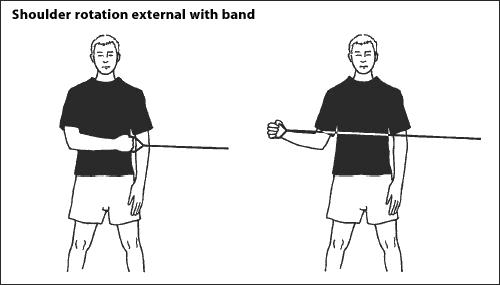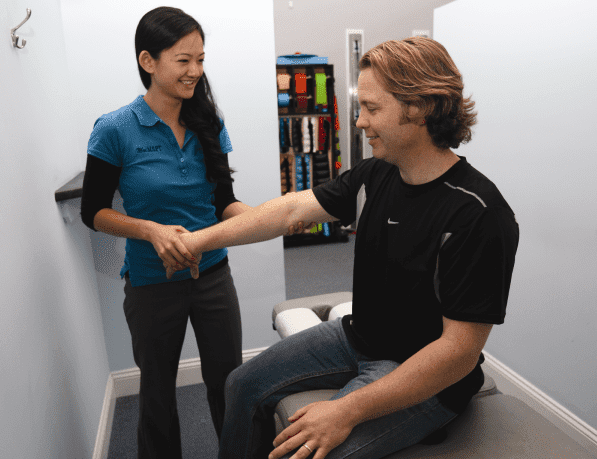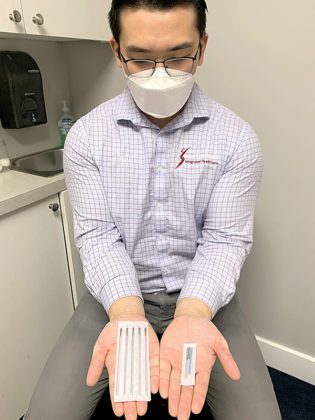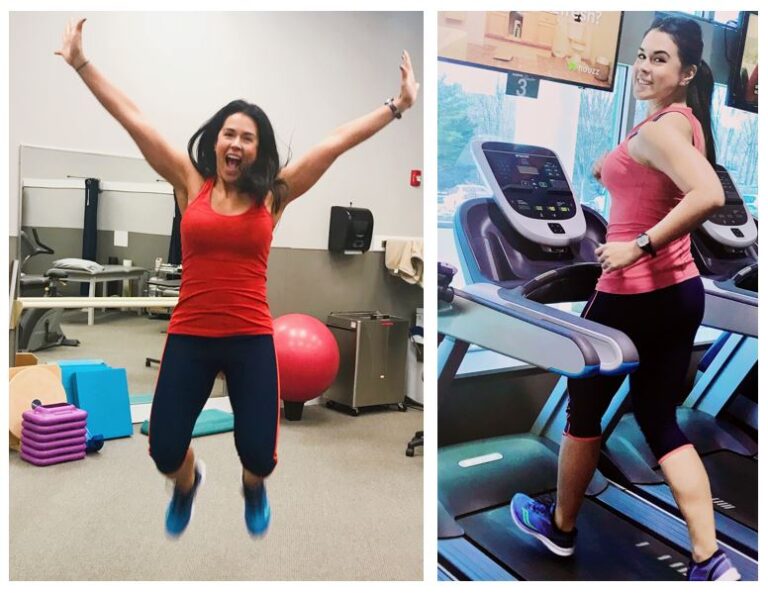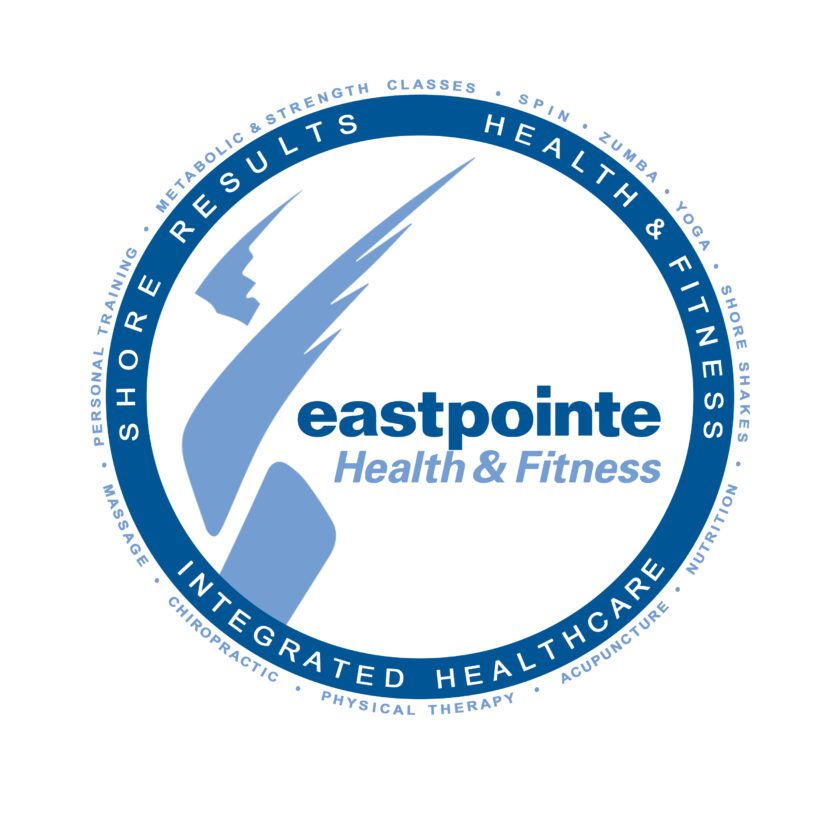By Mai Vu, Physical Therapist

The term Rotator Cuff is used to describe a group of 4 muscles: Supraspinatus, Infraspinatus, Teres Minor, and Subscapularis. The purpose of these muscles is to stabilize the glenohumeral (shoulder) joint when the arm is moving.
Classically, rotator cuff exercises involve shoulder rotation, where the elbow is held in one place while the hand moves through an arc. Exercises like the one below improve the strength of the rotator cuff.
However, when addressing rotator cuff problems, it is also important to improve dynamic stabilization of the shoulder girdle. The shoulder complex needs both strength and dynamic stabilization in order to function properly. Dynamic stabilization can be likened to balance. It is easy to appreciate this concept in regards to the lower extremity. Someone may be able to lift heavy weights on a Seated Knee Extension machine, so they would be considered “strong”; however if they have no balance they will not be able to walk, run, jump, or skip very well. Respectively, in the upper extremity it is possible to have strong muscles (including a strong rotator cuff) while lacking dynamic stability. In this situation the shoulder complex may function improperly and this can lead to a rotator cuff injury.
Posture is also another important element to address. In a person with the typical “computer posture”, the space that houses the supraspinatus muscle and subacromial bursa decreases. When the arm is moved or raised, impingement of the supraspinatus and subacromial bursa is likely to occur and may result in tendonitis, bursitis, or even a tear.
Although treatment to improve dynamic stability and posture is complex and comprehensive, here are examples of exercises that address dynamic stability (first picture) and posture (second picture).
Lean against a wall with a small ball in one hand, like shown in the picture. Your body should be at a 45 degree angle so that you are not directly facing the wall. Keep your chin tucked in and do not arch your back. Move the ball in small circles, both clockwise and counterclockwise. Repeat 30-50 times.

Place a foam roll or towel roll on the floor. Lay on your back with the roll along your spine and your knees bent. Keep your palms facing the ceiling. Relax in this position for 1-3 minutes. Gravity will help stretch the front of your chest and shoulders.


